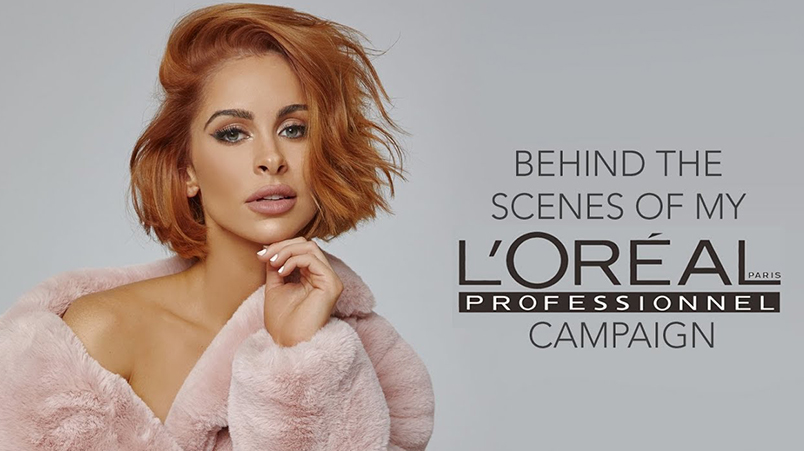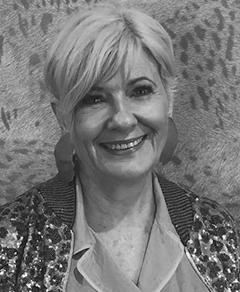L'Oreal's media director Lyndall Campher on her problems with YouTube and the upside to TV, Instagram and influencers

L’Oreal’s ANZ media director Lyndall Campher unpacks why the company will cut YouTube spending; take programmatic in house; open an eBay store and make influencers click-to-buy affiliate marketers.
You can get part of the story in the abridged version of this week's podcast with L'Oreal's Lyndall Campher or listen to the unplugged version here. Like Mi3's audience, the podcast is smarter, smoother and more sophisticated. Listen on the go. Seriously. Try it here.
Because some channels are worth it
L’Oreal gets marketing. The more product it sells, the more is recycled into media, marketing and advertising.
So when something works, the cosmetic giant will stick with it. When it doesn’t, L’Oreal will shake things up.
The findings of its latest study into TV and video channels therefore heralds change to both how and where L’Oreal spends its money. ANZ media director, Lyndall Campher, says it is recalibrating the media mix.
“Our agency, Carat, had told us we should be doing YouTube plus a couple of other video channels and TV,” says Campher. “I thought, ‘Well, what about Facebook, because all my research has indicated that Facebook and TV work really well together. There’s a very strong synergy between the two.’”
So she paid Kantar to run the numbers over a campaign in the final quarter of 2019.
“In a nutshell, we put 60 per cent of our video budget in linear TV, 20 per cent into YouTube and 20 per cent of it into Facebook properties [including Instagram]. The results were quite surprising to us,” says Campher, “including to our marketing teams.”
The study found that TV “provides the highest unique reach, around 24 per cent,” says Campher. “Second, Facebook and Instagram, but mainly Instagram, had a reach of about 17 per cent.” YouTube, however, flopped, and delivered “only 3.7 per cent unique reach”, says Campher. “So we have now recalibrated our media mix. TV is still pivotal to all our campaigns, but with more of a focus on Facebook and slightly less focus on YouTube,” she says.
In housing ahead
Last year, L’Oreal held a global summit for its media and marketing leaders in Berlin. Campher says it provided a forum for best practice - and that some of the approaches L’Oreal is taking internationally will soon land in Australia.
In-housing programmatic is one such aspect.
“So [the US and Canada] have taken programmatic buying in house, which is something we haven’t really considered in Australia… yet,” says Campher.
However, the company will this year dip a toe in the water in Australia via private marketplaces – and Campher says it could ultimately follow the North American model.
“What we think we might do is start off with a hybrid model with Carat. And then as more of our spend moves into digital, then, we’ll probably move it in-house,” says Campher.
Disrupted by influencers
Campher is candid on the headway independents are making in the healthcare and beauty sector as celebrities and influencers like Rihanna, Kylie Jenner and Jeffree Star start to eat marketshare.
“The indy brands are having a huge impact on our business right across the board,” says Campher, who thinks the multinationals didn’t realise quite how big a threat the upstarts would become.
Agility and speed to market has been the biggest challenge posed by Jenner et al. “We have responded well to it,” suggests Campher. “We have taken our turnaround time on new brands from two years down to nine months in South Korea. So it has made us sharp. But they go to market really, really quickly, and they are setting the trends.”
"The indy brands are having a huge impact on our business right across the board ... They go to market really, really quickly, and they are setting the trends."
Meanwhile, fewer young shoppers are visiting the supermarkets or pharmacy chains that make up a significant chunk of L’Oreal’s mass-market brand distribution.
While L’Oreal has distribution deals with Sephora and Mecca Cosmetics, plus online site Adore Beauty “which seems to be doing pretty well,” L’Oreal is also aiming to open its own direct channel – with an Australian eBay store set to launch later this year.
“eBay is huge in this market, about 20 times bigger than Amazon,” says Campher.

L'Oreal's Lyndell Campher
Sleeping with the enemy
Although some global stars are now L’Oreal’s competitors, local influencers remain part of the solution to reaching younger buyers, says Campher.
“We definitely think that influencers have a role. People locally relate to a lot of the influencers … Far more than celebrities,” suggests Campher, citing Carrie Bickmore, who once represented Garnier, as a standout local example.
Though influencer marketing has been dogged by fraud, Campher says L’Oreal is using third parties to analyse followers and weed out bad actors.
Next year, the company is taking that further, with plans to make its influencer network “affiliate marketers” where followers can click-to-buy.
“I think that will give us a far stronger idea of whether it is working or not,” says Campher. “But … nothing is without out risk anymore. There are brand safety issues across all sorts of digital channels. So I think the merits of using influencers outweigh the disadvantages of not using them.”
L’Oreal’s 2020 plan: Bigger, less often
Few people are betting on 2020 being a vintage year for media spend. Campher says L’Oreal hopes to hold rather than cut, but will be tasked by her board with “finding efficiencies”.
She says the upshot is likely to be fewer campaigns – but each one will be bigger and broader.
“TV is expensive now. Far more expensive than it used to be. Because of the declining audiences for the younger end of the market we’re having to build a media mix around that, which is making it that much more expensive,” says Campher.
“So the bottom line is we are looking at fewer campaigns; fewer, better, bigger and far more multi-touch campaigns. We find that we get much bigger sales uplift if we have a multi-touch approach. So instead of having 56 campaigns in a year, it’s probably going to be condensed into fewer but more multi-touch points - and we believe that’s the way to go.”
“If we cut budget, it is not because we do not believe in marketing. It’s because we still have to deliver a profit [number] … and that’s where the balance between short-term sales and long-term brand equity comes in."
The long and the short of it
Amid ongoing debate about the optimal balance between brand building and performance; whether marketers can afford the luxury to think beyond the next set of targets; and whether boardrooms actually care about marketing language and metrics, Campher says L’Oreal follows a different set of rules.
“We’re really lucky because we strongly believe in marketing and it all comes from the top down, from our global CEO Jean-Paul Agon. So we don’t have to have two different interpretations of the language that we use,” says Campher.
“We know that when we run a campaign, we can see sales uplift and we can see immediate impact on our brand equity. Our biggest thing is having enough sales - because our marketing cost are built into sales,” she says. “So the more we sell, the more we invest in media. It’s just a non-conversation; we know that marketing drives our brands.”
But linking budget to sales is a double-edged sword. If sales fall, budgets fall.
“That is not because we do not believe in marketing. It’s because we still have to deliver a profit [number] … and that’s where the balance between short-term sales and long-term brand equity comes in,” says Campher. “This is the unfortunate part, sometimes short-term sales kind of kicks in.”
For now, sales are falling in cosmetics, which suggests L’Oreal’s media spend, if still linked to sales within some of those core brands, will be pared back
On the flip side, skincare is increasing “I want to say dramatically,” says Campher, “but I think the market is growing by about six per cent. Women are not buying as many cosmetics as they used to. Now, people are more concerned with skincare.”

